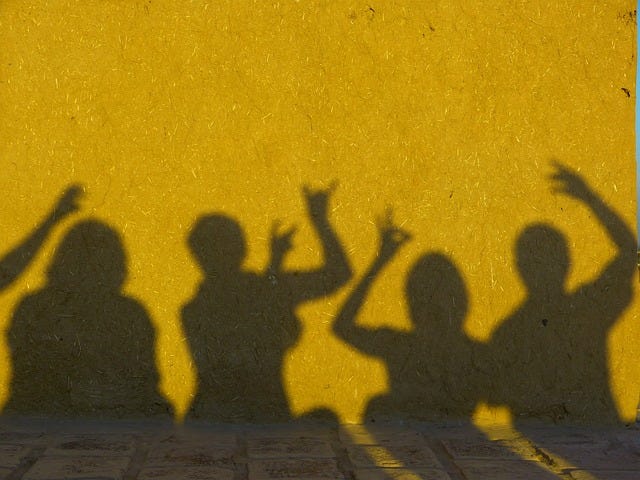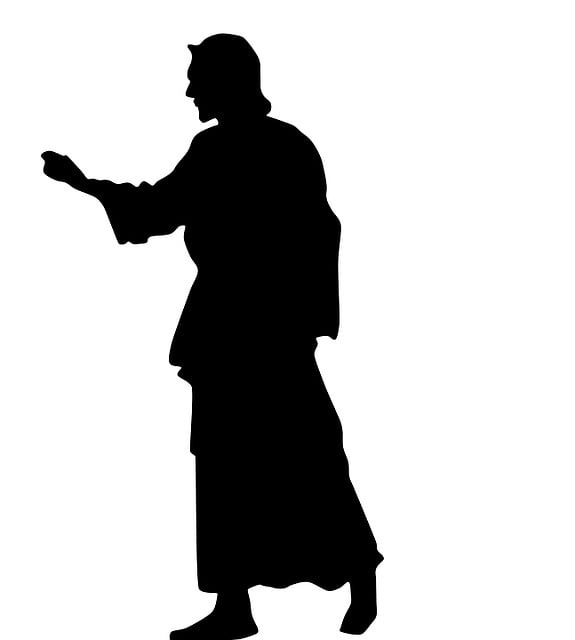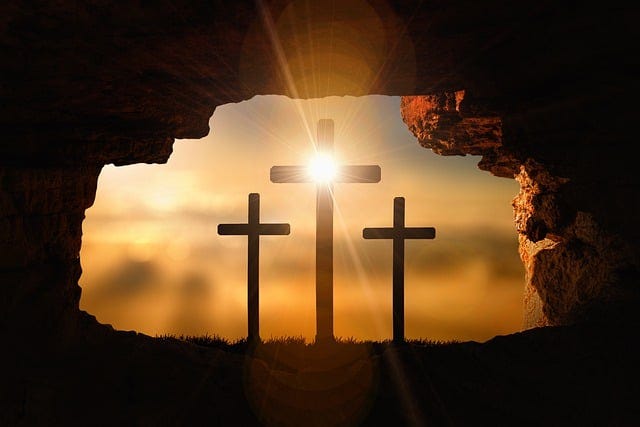The cave
God is light and truth.
There is a timeless allegory in Plato’s Republic—the story of Plato’s cave. In the cave are a group of people who have lived as prisoners since birth. They are bound and can only look in one direction—straight ahead. Behind them is a fire and a wall. Other people manipulate statues and shapes on the wall and the light from the fire casts their shadows over the prisoners onto the wall in front of them. The prisoners watch what is being acted out in front of them in the form of shadows. The shadows are their perception of reality. It is all they know.
One day, a prisoner is freed. Turning around, he sees the fire and the statues. Stunned, he comes to realize that the things themselves are the reality. The shadows are merely images of the real things.
When he is reluctantly dragged up the steep and rugged ascent to the entrance of the cave, he is forced to move closer to the light. Never having faced such light before, he finds himself in pain and irritation as a result.
The prisoner is led from the cave into the world outside. He is immediately blinded by the sunlight. As he adjusts to the light, he comes to see real people, plants and animals and realizes that the statutes were also only copies of reality. Now that he is in the light, however, he sees things as they truly are.
One modern interpretation of Plato’s cave appears in the 1999 movie The Matrix. The main character, Neo, is a human being connected to the computer system known as the matrix. While he is connected to the matrix, he is on life support and literally plugged into the computer system. What he senses, feels, sees, and tastes are all projected into his mind through computer signals.
A group of humans has been freed from the matrix and seeks to release Neo. Their leader, Morpheus, meets Neo in the matrix and presents Neo with a choice. Neo can take a blue pill and stay in the matrix, living his life as he knows it (which is a complete illusion or computer simulation); or he can take the red pill, come out of the matrix, and see the truth. Neo chooses the red pill and is released from the matrix.
Like the prisoner in the cave, however, Neo’s adjustment to reality is difficult. His eyes hurt when he looks around him because he has never actually used them. Likewise, all of his muscles are atrophied for lack of use. They require therapy and stimulation to work again. The reality of human existence is initially very painful to him emotionally. As he learns more and more about the world, Neo eventually comes to terms with reality and adapts.1
Even though Plato wrote the Republic prior to the birth of Christ, his allegory has survived the test of time because it contains shadows of the truth. After the birth of Christ and the revelation of the Gospel, we can now see how the truths revealed in his allegory are more fully revealed in the spiritual journey of the Christian.
Without baptism, the chains of original sin still prevent a person from seeing the light of God. The unbaptized person sees images of the truth, but does not see the Truth. He is sitting in the darkness looking at shadows. The shadows are his perception of reality. It is all he knows.
The Christian who has received the seed of eternal life and the Holy Spirit through the waters of baptism no longer sees the shadows. The Christian is capable of seeing spiritual realities in the form of symbols through faith.
As the Christian progresses through the different ages of the spiritual life, he leaves his chains behind in the cave and starts making the difficult ascent up the mountain of the Lord. The ascent is movement towards the light, but he remains in the cave. There is still darkness around him. He must leave behind those things that have kept him in darkness. With perseverance, he will reach the exit and enter into the light.
After he exits the cave, he becomes more and more acclimated to the light. There is still a period of pain and adjustment, however, because he has been climbing out of the darkness. The light is now very bright. He is not ready to experience the full force of the light. But as he adjusts to the brightness, he begins to see spiritual realities. He no longer sees in the form of symbols through faith, but sees things in their true spiritual nature. He is one with the light.
God is light and in him is no darkness.2
Jesus spoke to them, saying, “I am the light of the world; he who follows me will not walk in darkness, but will have the light of life.”3
What is the “red pill" that completes our release from the darkness and leads us completely into the light of eternal life? The Eucharist “is the Sacrament, in which the true Body and Blood of Christ is contained under the individual species of bread and wine.”4 The Blessed Sacrament (Holy Communion) is able to release us from the bondage of the matrix that we live in—a world of false belief systems, pagan ideologies and sins that tie us down. The Real Presence5 of Jesus Christ in the Eucharist is the key to eternal life.
Jesus said to them, “Truly, truly, I say to you, unless you eat the flesh of the Son of man and drink his blood, you have no life in you; he who eats my flesh and drinks my blood has eternal life, and I will raise him up at the last day. For my flesh is food indeed, and my blood is drink indeed. He who eats my flesh and drinks my blood abides in me, and I in him.”6
Let us ask the Holy Spirit to lead us into all the truth.7 Let us pray the Holy Spirit take away the rose-colored glasses of sin and error that keep us from the fullness of the Truth. Let us pray the Holy Spirit purify us so that we can see God.
May the fire of the Holy Spirit confront every false reality and shadow in your spiritual life, in the Name of Jesus. May you come to know and love Jesus more and more each day in your prayer life.
The Lord bless you and keep you:
The Lord make his face to shine upon you, and be gracious to you:
The Lord lift up his countenance upon you, and give you peace.8
Eric A. Welter is an employment lawyer and trial attorney with a long-time devotion to intercessory prayer. He is a Catholic Christian who has been involved with intercessory and healing prayer ministry for over twenty years. The Abound in Hope Ministry website is https://www.aboundinhope.org/ministry.
The movie’s plot is more complicated than this, but the basic allegory is present. The movie is rated “R” for violence, adult language and adult topics. It is not for children.
St. Peter Canisius, A Small Catechism for Catholics at 45 (1756) (reprinted by Mediatrix Press 2014).
A Sacrament is “a visible sign of invisible grace established for our sanctification.” Id. at 42. The Sacraments were established by Christ, handed down by the Apostles, and preserved in the Catholic Chuch. Id. The seven Sacraments include Baptism, Confirmation, the Eucharist, Penance (Confession), the Anointing of the Sick, Holy Orders and Matrimony (marriage). CCC 1210. The eastern Orthodox churches also retained the Sacraments.
According to Luther, as of 1532 the whole of Christendom believed in the Real Presence of Jesus Christ in the Eucharist. The Real Presence of Christ in the Eucharist. In The Catholic Encyclopedia, “Proof from Tradition.” New York: Robert Appleton Company. http://www.newadvent.org/cathen/05573a.htm (citing Wider etliche Rottengeister, 1532).




